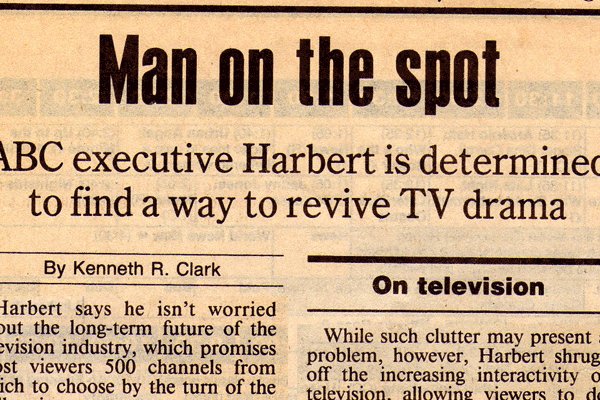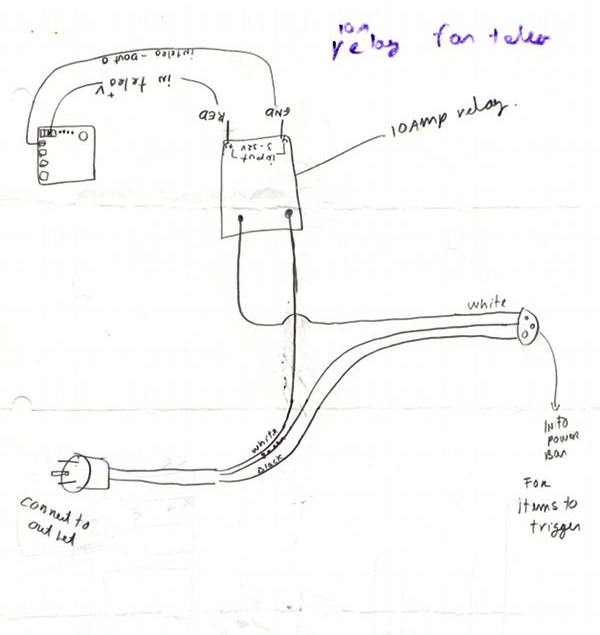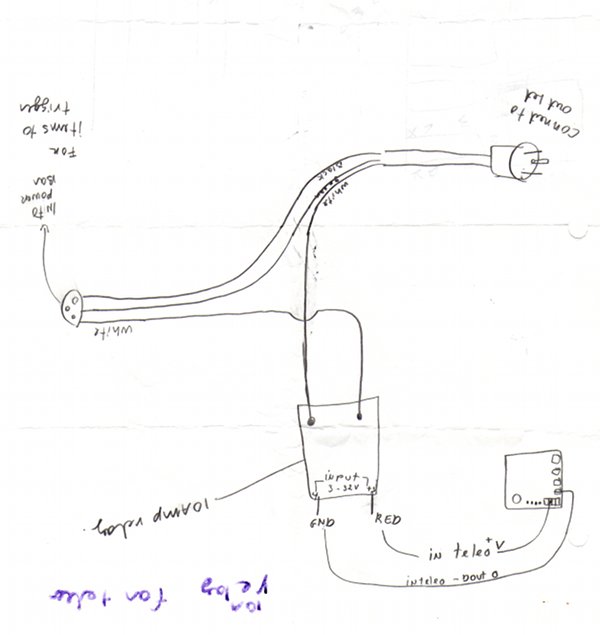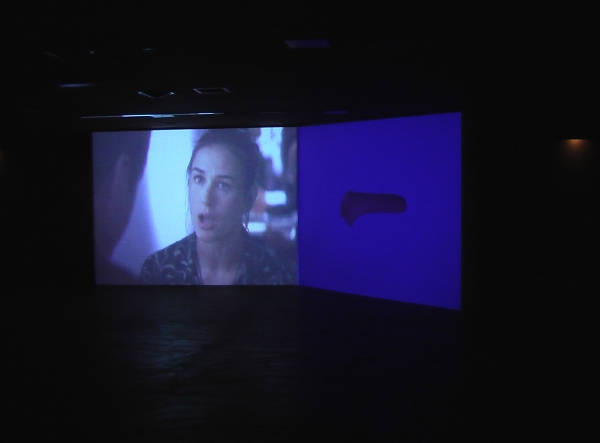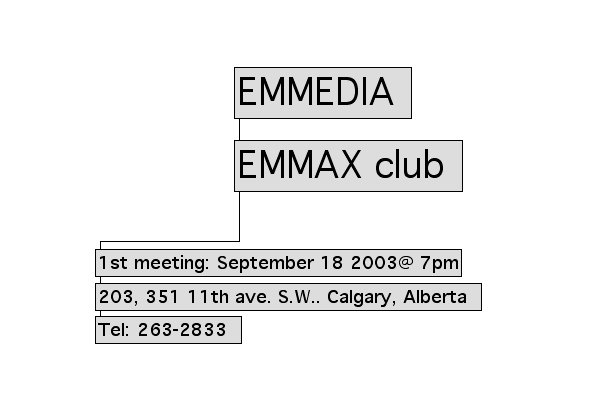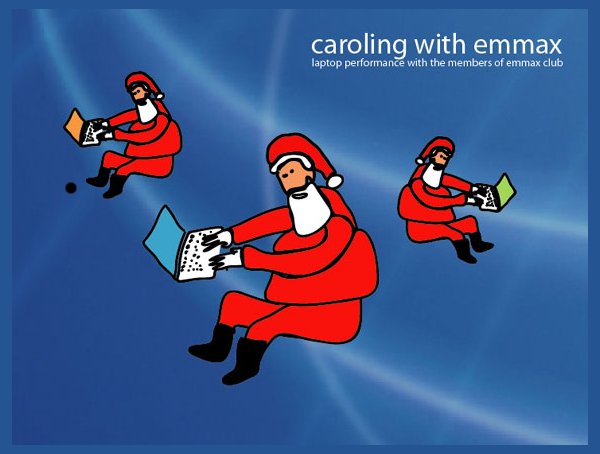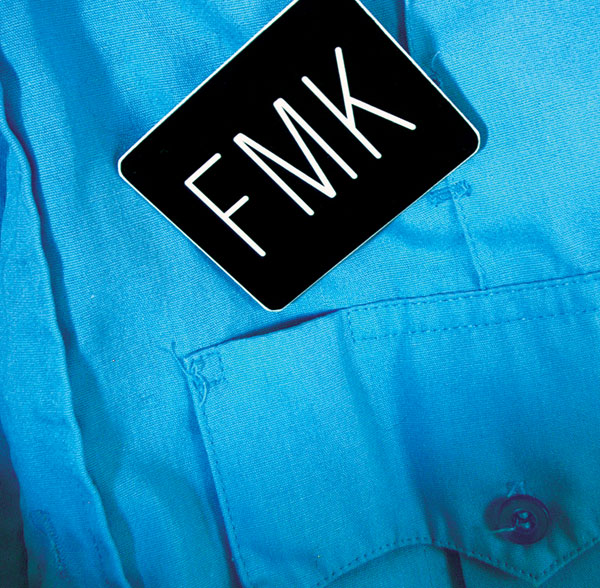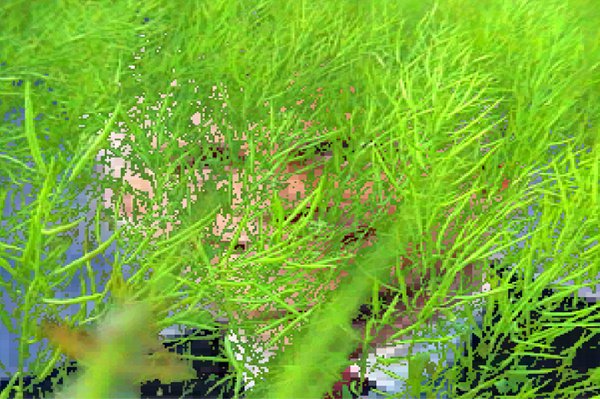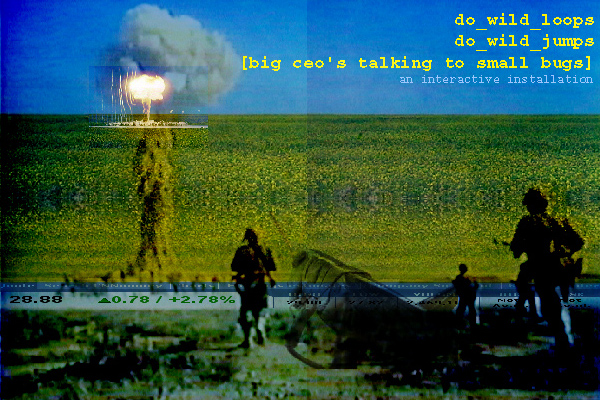talk mainstream (2009-2010)
talk mainstream is a Twitter Transitivity* project by Daniel Dugas exploring how language and spam works in the construction of knowledge. An Apple script downloads the Google Trends list information and a MAX patch, is set up to manufacture the tweets. Ironic comments rise out of the list of keywords people are searching as compiled by Google, and other lists of verbs, nouns, prepositions, adverbs and locales.
*Transitivity is a way of describing the relationship between participants and processes in the construction of clauses – basically, ‘who (or what) does what to whom (or what)’.
John Hartley (2002) Communication, Cultural and Media Studies – The Key Concepts, London, Routledge
The project ran from November 9 until December 15, 2009.
![]() – Twitter archive
– Twitter archive
Are you ready? (2008)
ARE YOU READY?
David McCallum is a musician and a media artist from Toronto. His day job is editor of Musicworks Magazine, his passion is to discover new terrains. With a background in physics, music composition and new media, he is one of the new breed of explorers that bring science and art together. McCallum has a diverse body of work that encompasses music, performance, locative media, video, net art and installation. The motivation behind all of these works is an insatiable curiosity, a desire to experiment and to share his discoveries with diverse audiences.
LOCATIVE ARTS
In the last few years, we have seen numerous projects rooted in geometry, location and psychogeography. Projects with names like Geograffiti, Sound Mapping, Urban Tapestries, and GPS Drawings. All of these are locative art, meaning that they use location-based media such GPS or Wi-Fi as the medium. WARBIKE, one of McCallum’s most important works to date, is such a project. It is a bicycle with a clear plastic container attached at the front, loaded with electronics that sonify computer wireless networks. As the bicycle rider cycles around town, the electronics pick up nearby Wi-Fi signals and turn them into squeaking sounds based on the strength of the signals and the encryption status of the network. There are two types of wireless networks, those that are encrypted and those that are not. If the initial motivation of McCallum was to draw attention to the level of safety of any network, the most important effect of his project is to make the participants aware of this invisible layer of communications that is floating in our public spaces. Those invisible networks of information are now ubiquitous in our urbanscapes. McCallum points out:
“Did you know that almost anywhere that you go in a city you’ll be sharing space with someone’s private wireless computer network? All of their personal communication—e-mail, love messages, bank passwords, credit card numbers, and bizarre surfing habits—will be passing through your body without your awareness. Who are they, and how do you feel about sharing space with their personal life?”
The image of emails and love messages and even passwords and bank accounts passing through bodies has an undeniable poetic weight but it also raises important questions about privacy and free access to information. One of the big questions is how can an Open Society be built around private networks? This concern is also McCallum’s, as a volunteer for wireless Toronto, a not-for-profit group promoting no-fee wireless Internet access.
Popular geotagging software like Google Earth has help fuelled a passion for anything location. Locative arts projects are sprouting everywhere and McCallum continues to question and to negotiate their relevance and problematic. Can we compare the WARBIKE rider, seeing and feeling what is around, to the fox in the Little Prince? Is the rider seeing the invisible? Is the essential located only in the hip downtown core, in the Hotspots of our cities? Can this abundance of information that is surrounding and enveloping us all the time keep us warm at night? In a recent email exchange McCallum stated:
“I’m no longer explicitly interested in pursuing purely psychogeographic things. I’d like to focus more on the experience of people within spaces, be they urban or not… There’s also been a bit of a fall out, at least in Toronto, with the psychogeographic community. Those who were only casually interested, like me, are starting to realize that to truly understand the workings of the city, one must look beyond the hip downtown core and into the rather unhip and desolate suburbs. I’m not sure that this is anything that any of the core psychogeographic boosters are terribly interested in, or are even equipped to handle. This isn’t even taking into account the drudgery of city planning where the reality involves budgets and garbage pail infrastructure and other incredibly tedious but necessary components to a city. And then there’s also the slightly cultish nature of public space boosterism, or the class division between those who have the luxury to spend time worrying about public space and those who do not.”
When in 1897, Guglielmo Marconi sent the first wireless communication message over water, he could never have imagined the complexities of our encrypted digital age. The message, sent from Lavernock Point, South Wales to Flat Holm Island, a distance of 14 kilometres, was simply “Are you ready”. 110 years later, it looks like this message is still resonating through space. Are we ready?
PD & Do-it-Yourself attitude
David McCallum is coming to Calgary to give a workshop on PD , which he uses for music. PD, aka Pure Data, is a real-time graphical programming environment for audio, video, and graphical processing. Miller Puckette developed the program in the 1990s for the creation of interactive computer music and multimedia works. One of the great advantages of Pd over Max Msp, a similar program, which also originated from Puckette, is that Pd is a freeware.
McCallum is an advocate of the open source movement and of the do-it-yourself attitude. He does have strong convictions about the craft of new media art and the importance of doing the work by himself or with his collaborators. David sometimes works with the i/o media group, a collective of media artists exploring real-time improvisation performance . He also is capable of looking at technological apparatus and using it in novel ways. His performance i swallow is a good example. The MacBook’s design has the mic and webcam directly beside each other. McCallum can play the feedback through the microphone while the webcam captures his actions. This dual process allows the audience to see a connection between the sound and his actions—something, McCallum says is lacking in most electronic music performance.
David will be at EMMEDIA Friday, January 11, 2008 – 7:00 PM to present his project WARBIKE. He will also be giving a Pure Data Introductory Workshop January 12-13, 2007, Noon – 5:00PM.
For more information call 263.2833
1. David McCallum websites includes:
http://www.mentalfloss.ca/sintheta/projects/?
http://sintheta.blogware.com/
2. On a technical level, the ‘sniffing’ is done by Kismet, a wireless network detector, the audio by Pure Data, and Python is acting as an interpreter between two.
3. David was the editor of the Locative Technologies issue (March 2007), digital arts quarterly magazine, vague terrain. For more info:http://www.vagueterrain.net/content/archives/journal06/journal06.html
4. Pure Data: http://puredata.info/
5. http://www.mantissa.ca/iomedia/
6. i swallow was presented earlier this year at the Pleasure Dome’s New Toronto Works Show and at Interaccess both in Toronto.
YouTube: http://www.youtube.com/watch?v=wOknyZ7QHM0
Text published at EMMEDIA Gallery & Production Cociety
This fall Daniel Dugas has been touring his real time network performance Free Market Karaoke in Mexico City and on the East coast. He was also invited to the Trois-Rivieres Poetry Festival where he read from his latest book ‘Même un detour serait correct’. Daniel works and lives in Calgary.
(FMK) Karaoke du marché libre (2007)
Free Market Karaoke (2005-2009) from Daniel H. Dugas on Vimeo.
• Subterfuge – Galerie Sans Nom, Moncton, NB, 30 novembre 2007
Paysage sonore crée lors d’une performance à la Galerie Sans Nom, Moncton, Nouveau Brunswick dans le cadre de l’exposition de groupe célébrant le 30 e anniversaire de la GSN. La pièce a été crée avec de l’information des marchés à termes (futures market)
(FMK), Karaoke de Mercado Libre (2007)
• IM_POLIS – TRANSITIO_MX Festival, Ciudad de Mexico, Sabado 13 2007
Performance sonoro
El Karaoke de Mercado Libre es una series de entornos sonoros e interactivos creados en tiempo real por medio de una computudora y un programa específico que permite generarlos, basándose en los datos financieros de las compañias que están negociando en la bolsa de valores.
Interactive soundscape created during the Transitio_MX Festival at the Laboratorio Arte-Alameda, in Mexico City – oct.12.07
TMX- Telephonos de Mexico
ANC – Angus Coote Holding
FIB BID (2007)
• Paved Arts, Saskatoon, SK, February 23 – March 10 2007
BID is the symbol for Sotheby’s, the noted auction house on the New York Stock Exchange (NYSE). A FIB is a trivial lie.
This interactive video projection is based on a short clip from the movie THE JUROR, a 1996 film directed by Brian Gibson. Demi Moore stars as Annie Laird, a single mother, picked for jury duty on a Mafia trial. She is forced to persuade her fellow jurors to vote “not guilty” by the “Teacher” who threatens to kill her son. When the trial is over, it seems that he cannot let her go. (1) Annie is a sculptor who makes boxes reminiscent of the FLUXKITS.(2) The content holds meaning to the artist and can be interacted with by the audience. The Teacher played by ALEC BALDWIN befriends ANNIE through buying a few of her works on exhibit in a New York gallery. Here is the transcript of their first encounter:
THE TEACHER
Do you know Japan?
ANNIE
uh huh
THE TEACHER
Contemporary Art is a sort of currency there now, because its value is so inconstant, it’s so attractively pliant.
ANNIE
…I’m lost… I’m not connecting the dots here
THE TEACHER
None of that really matters, all that matters is we need to start getting your pieces traded… record some six figure sales… get you the right review in Art Forum, the proper niche at the Basel Art Fair, that sort of thing, but that’s my job don’t you worry about that.
ANNIE
Listen, Mister Cordell
THE TEACHER
Call me Mark
ANNIE
OK Mark. Listen…
THE TEACHER
May I call you Annie?
ANNIE
…Yeah, you know you can call me whatever the hell you want – but I am not interested in having my art used as some kind of currency!
THE TEACHER
Annie… what do you think I get out of this… do you think I make money out of this… I don’t, I don’t need to… what I do for a living pays me very, very well. I do this so that artists like you can go into you studio and work on your boxes and not worry whether of not your children are being fed… so that these idiots that control the art….
Intent
“I do not want my art used as a currency “ is the key phrase. When I first saw the movie I was laughing out loud, I could not believe that an artist would say that. How funny can we be? What kind of sordid joke is this? I have to say that when I looked at the movie again I was still laughing. But what does it mean? Is it like a mechanic that says, “No, no, no I cannot accept any payment for changing the cylinder head gasket on your car,” or a real estate agent that says, “Please do not insult me by wanting to give me money in exchange for selling your house,” etc. Obviously this is nonsense, but when it comes to art, or at least in the media version of the artist, it is acceptable, it is plausible: artists are unpractical and eccentric. This clip incited me to look at the art market, which is a business like any other. Art, like chemicals and pork bellies, is subject to the pressure of the market. If Annie Laird refuses to sell then maybe it will make her art less available, more desirable, and therefore, increase the value of her work. But then again, she could vanish into oblivion. She could also choose to flood the market with her boxes à la mode de Wal-Mart, but that is another story. I choose the Sotheby’s Art House because it is the oldest international auction house and because it is listed on the NYSE, unlike Christie’s, which is a private company. I was interested in using some of the information that is relayed in real time – minus 20 minutes – on the Internet; like the highest price of a share, the lowest price of a share, the volume of sale, the difference between the highs and the lows, etc. I have been following the stock market for some time, using the data to create soundscapes as in the Free Market Karaoke project (2005), or to alter projections like in the do_wild_loops; do_wild_jumps; [big ceo’s talking to small bugs] installation (2003). I am interested in the visualization of data, in the graphical presentation of information but also in the re-contextualization of information. In the do_wild_loops project, I saw the DOW CHEMICAL CO stock rise sharply when the Iraq war started in 2003. Because of this dramatic change I had to review and reset the range in which the incoming information would evolve.
Daniel Dugas
Calgary, AB
February 2007
fibid is portmanteau word fusing FIB and BID together. It is a currency created especially for the exhibition. For this Saskatoon exhibition, the ‘bank’ has issued series of 180 – ’10 fibids’, 200 – ’20 fibids’ and 191 – ‘5 fibids’.
All fibids are numbered. I intend to distribute these bills during the opening on Friday, February 23rd.Ten bills have been marked with a special number and will win a prize of either a CD of FMK or a DVD of La Dauphine.
EMMAX (2003-2006)
Emmax was created on September 2003, in Calgary, Alberta, Canada under the umbrella & support of EMMEDIA. Emmax is a club / group / community of people who are interested in working / playing / learning and sharing ideas and exploring with Cycling74 MAX MSP and Jitter software
Founding members: Ken Buera, Daniel Dugas, Jim Goertz, David Kim, Valerie LeBlanc and Don Simmons.
EMMEDIA Gallery & Production Society gratefully acknowledges the invaluable support of The Canada Council for the Arts, The Calgary Community Lottery Board, The Alberta Foundation for the Arts, The Calgary Region Arts Foundation, The National Film Board of Canada, Webcore Labs, The Alberta Media Arts A lliance Society, our many dedicated members, artist-producers, volunteers and the Calgary community.
last update: jan 2006
Caroling with Emmax – Dec 23, 2003
Participants: Ken Buera, Daniel Dugas, Jim Goertz, Don Simmons
Ledgefest festivalof ambient music: Jan 9 – 12, 2004
Participants: Ken Buera, Daniel Dugas, Jim Goertz, Don Simmons
Birthday song – The New Gallery, Jan 17, 2004
Participants: Ken Buera, Don Simmons
Not White Noise – Bubonix Tourist & Birds and Stone, Dec 19, 2004
Participants: Ken Buera, Kay Burns, Daniel Dugas, Jim Goertz, Valerie LeBlanc, Don Simmons
Silencing Critical Art, Jan 20, 2005
Participants: Ken Buera, Don Simmons
Localective, Jan 23, 2006
Participants: Tyler Johnson, Dallin Ursenbach, Anthony Gasca, Tammy Kahn, Brendan Baudat, Amanda Henderson, Sarah Houle-Lowry, Bogdan Cheta, Jena Walker, Maria Cucueto, Robert Harpin
Audio clip: Adobe Flash Player (version 9 or above) is required to play this audio clip. Download the latest version here. You also need to have JavaScript enabled in your browser.
Audio clip: Adobe Flash Player (version 9 or above) is required to play this audio clip. Download the latest version here. You also need to have JavaScript enabled in your browser.
FMK (2005-2007)
• Transitio Festival, Mexico City, MX, 2007
• Galerie Sans Nom, Subterfuge, Moncton, NB, 2007
• Mayworks Festival, Calgary, AB – May 1, 2005
• Sound Bites, NSCAD + Centre for Art Tapes, Halifax, NS – July 15, 2005
• Faucet Media Arts Centre, Sackville, NB – July 17, 2005
Free Market Karaoke (FMK), is both a series of real-time interactive soundscapes and a computer program. The program allows me to create real-time interactive soundscapes based upon the financial data of companies trading on the Dow Jones Index. Companies generate wealth for their shareholders and an abundant flow of data. This information is continually streaming out in real-time (minus a 15 minute delay) from the World Stock exchanges and is displayed on various web sites on the Internet. Investors and brokers are in this game to make a buck, to make their investments grow as much as they can; the bigger the better as the saying goes. They do not usually orchestrate their movements with one another to create sense on a language level. The money is the meaning of their entreprise, the only pattern worth wearing, the reason to exist. My role in FMK is mainly that of a remixer. My decisions are directed in the reorganization of incoming data into musical events. I am on the lookout – ‘the ear-out’ – for rhythms, textures, ups and downs, anything that seems to be talking. I want the digits to sing and dance, to laugh and to cry. I want to see life-savings sounds roll in and out like a fog bank that envelops a small coastal town. I want to hear the investors’ roar like the turbines of a space shuttle racing through the earth’s atmosphere upon re-entry. I want to transform big time brokers into bees flying in a field of brightly colours flowers, into dust trapped inside the vacuum of a Dirt Devil, into oil seeping out of the ground, into the wind blowing inside a cave, into the electricity singing through wires.
These soundscapes were created with the software Max/MSP in conjunction with Charles Hines’ QuoteFiler 1.31. I used the output data from: YAHOO CURRENT QUOTE VARIABLES, the Last Trade Price, the Day High, the % Change of a share and so on, to manipulate audio signal and MIDI information.
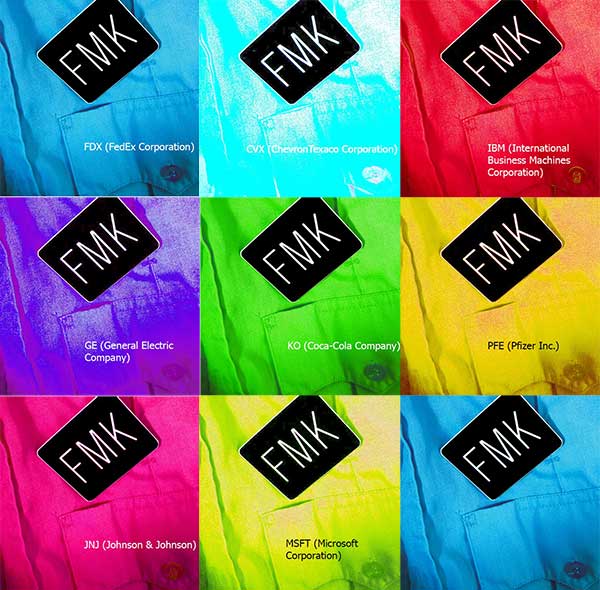
do_wild_loops; do_wild_jumps; [big ceo’s talking to small bugs] (2003)
• EMMEDIA, Calgary, Alberta, March 23 -29, 2003
• New Media Research Networks Conference, Charlottetown PEI, March 26-27, 2004
• Ed Video Media Arts Centre , Guelph, ON July 9-23, 2004
do_wild_loops; do_wild_jumps; [big ceo’s talking to small bugs] (2003) from daniel dugas on Vimeo.
related interactive projects: here
Project realized through the A.I.R. program at EMMEDIA in 2003.
In the spring of 2002, scientists were forecasting a severe infestation of grasshopper for Central Alberta. I became interested in seeing how the farmers were going to deal with the situation. The most common solution, insecticide is also the most hard core. Chlorpyrifos, trade name Dursban, Lorsban and others, is primarily produced by the US multinational DOW Agro a subsidiary of the Dow Chemical Company and is used widely throughout the world. Chlorpyrifos, one of about 100 organophosphate insecticides on the market today, is a neurotoxin used to kill insect pests by disrupting their nervous system. The organophosphates were developed during World War Two by Nazi chemists. [1]
According to Dow, Chlorpyrifos, is one of the great success stories in pest control. [2] As The Dow Chemical Company is the main player, I started to look at the company itself; its products, triple bottom-line, history; and the most crucial element of all, its trading values. Dow is known for all sorts of chemistry successes; like the first commercial scale production of bleach in 1898, the production of silicones for the military in the 40’s, the introduction of the revolutionary Ziploc bag (1968), the marketing of the first compact discs (1983), and so on. In 1960, Dow introduced 23 new products. One of them; Agent Orange, would generate enormous profits for the company.
In the 1990’s, Dow Chemical was involved in the silicone breast implants controversy. The Company dodged lawsuits by proving “ … that it only owned half of the breast implant manufacturer Dow Corning Corporation and that they did not develop, test or manufacture silicone breast implants. … ”[3]
In 1999, Dow and the infamous Union Carbide Corporation merged to become the 2nd largest chemical company in the world. Union Carbide Corporation owned and operated the pesticide factory, which caused the worst chemical accident in history. Located in Bhopal, India, over 40 tons of highly poisonous methyl isocyanate gas leaked out of the plant at midnight on December 2, 1984. More than 8,000 people died in the immediate aftermath of what is known as the ‘Chemical Hiroshima’. 10 more are dying every month due to exposure-related diseases. At present, Dow is divesting itself of any moral and financial responsibility related to this tragedy. [4]
May the force be with you
Through my research, I learned that one of the basic ways to curb the grasshopper population is to clean the ditches alongside of the roads, and to turn over the soil in the fields. The process uproots and exposes grasshopper eggs, to greatly reduce infestations. These solutions might be viewed as rather sissy compared to the product solutions proposed by the industry: Lorsban 4E, Warrior T, Capture 2EC, etc.
Some of those products, and especially the Genetically Modified Organisms are re-writing ecology FAST FORWARD. The desire to master the world has never been so tempting, while the power to resist such changes remains limited at best. A quote by Dr. Denis Waitley, Productivity Consultant for Monsanto, one of Dow’s largest competitors, sums up the situation in a very sanitized manner, “There are two primary choices in life: to accept conditions as they exist, or accept responsibility for changing them.” [5]
I became interested in the interaction and the power relation between the “head” and the “tail”, the CEO’s and the bugs, decision makers and individuals. Dow has a Leadership web page with a thumbnail photo and a biographic description for each of its executives. I have copied and pasted everybody who’s somebody and I gave them a big cushy leather executive chair right in the middle of my project. For several years, the focus of my work has been related to the economy. Boom and bust alike. One economic tool that I have followed with regularity is the Map of the Market, [6] which provides a colour coded map of current market values. This visual aid was inspirational for the do_wild_loops’ project.
Working with the Cycling74 MAX/MSP and the Jitter programs, I set up a series of mechanisms to download financial information from The Dow Company (the latest price of a share, the percentage change and the dollar change of a share), setting up a custom “map of the market.” I use this information to affect and inflict changes on the selected movies, images and sound files inside the program. I created a structure where the visitors could re-write, if not history, at least the biographies of the Leaders. Visitors to the exhibition can select and erase a biography, write a new one and upload it onto the server hosting where the project’s website.
1 -Organophosphate: https://en.wikipedia.org/wiki/Organophosphate
2 – Chlorpyrifos helps: http://www.dowagro.com/chlorp/about/over.htm
3 – Breast-Implant Verdict Reversed by Appeals Court: http://www.dow.com/dow_news/corporate/2002/20021209a.htm
4 – For more on information see audio file doww19.aif
– For more information on Bhopal: http://www.bhopal.net/index.php
5 – Monsanto Products Overview: http://www.monsanto.com/monsanto/layout/products/default.asp
6 – SmartMoney.com: Map of the Market :http://www.smartmoney.com/marketmap/
7- Kamandi, The Last Boy on Earth Vol. 2. No. 12. Dec 1973. Published by National Periodical Publications Inc. N.Y. N.Y.
(revised May 29, 2017)
Daniel H. Dugas
Archives
Blogroll
- A.I.R. Vallauris
- ACAD
- Adobe additional services
- Adobe Creative Cloud
- AIRIE
- Amaas
- Amazon Author Central
- ARTothèque
- Australian Poetry
- Basic Bruegel
- Bitly
- CCCA
- CDBaby
- Cycling 74
- Dissolution
- Éditions Prise de parole
- Emmedia
- eyelevelgallery
- FAVA
- Festival acadien de poésie
- Festival FRYE Festival
- FILE – Electronic Language International Festival
- Freeware list
- Fringe Online
- Galerie Sans Nom
- Gotta Minute Film Festival
- Instants Vidéo
- JUiCYHEADS
- Kindle Direct Publishing
- Klondike Institute of Art and Culture
- La Maison de la poésie de Montréal
- La Maison de la Poésie et de la Langue française Wallonie-Bruxelles
- Laboratorio Arte-Alameda
- Le Centre Jacques Cartier
- Liberated Words
- Maison Internationale de la Poésie – Arthur Haulot
- MediaPackBoard
- Miami Book Fair International
- Monoskop
- Mot Dit
- NSCAD University
- Paved Arts
- PoetryFilm
- Portail des auteurs du Nouveau-Brunswick
- RECF
- Revue Ancrages
- Salon du Livre du Grand Sudbury
- Sculpture Space
- Subtropics.org
- Sydney college for the arts
- The Centre for Contemporary Canadian Art
- The New Gallery
- Trevigliopoesia
- tumbler-documents
- V Tape
- Valerie LeBlanc
- VideoBardo
- Void Network-Κενο Δίκτυο
Categories
- #covidpoèmes
- Advertisement
- AIRIE
- Ancrages
- anthology
- Anthropocene
- Architecture
- Around Osprey
- art
- Article de presse
- arts visuels
- audio
- Australian Poetry
- Basic Bruegel Editions
- Book
- book fair
- Cafe Poet Program
- Ce qu'on emporte avec nous
- Citations gratuites
- Collaboration
- commentaire
- commentary
- Compte rendu
- conférence
- Conservation Foundation of the Gulf Coast
- COVID-19
- Critique littéraire
- culture
- Daniel Dugas
- Design
- Édition Michel-Henri
- Éditions Perce-Neige
- Éloizes
- Emmedia
- emoji etc | émoji etc
- Environnement
- essai
- essay
- Everglades
- Exhibition
- festival
- Festival acadien de poésie
- Festival Frye Festival
- FIPTR
- Flow: Big Waters
- Fundy
- Habitat
- installation
- Instants Vidéo
- interactivity
- journal
- JUiCYHEADS
- Kisii
- L'Esprit du temps
- laptop
- Leaving São Paulo
- lecture
- Livre
- logos
- Magazine
- Miami Book Fair
- Moncton 24
- novel
- OASIS
- oil spill
- perception
- performance
- Photo
- poésie
- Poetic Licence Week
- Poetry
- politics
- politique
- press
- Prise de parole
- Revue Ancrages
- salon du livre
- sculpture
- Sculpture Space
- sound
- Souvenirs
- Spirit of the Time
- Style & Artifacts
- Symposium d'art/nature
- talk
- television
- The New Gallery
- Uncategorized
- Valerie LeBlanc
- vidéo
- vidéopoésie
- Videopoetr/Vidéopoésie
- videopoetry
- visual arts
- What We Take With Us
- youth literature






